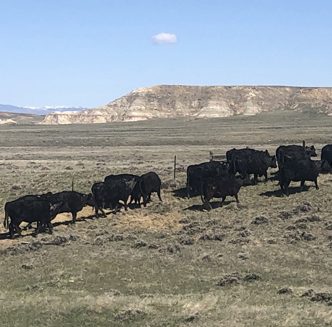Shutdown Persists: Effects of government shutdown ripple throughout U.S. ag industry

As the partial shutdown of the federal government stretches into its second week, the standoff in Congress shows little sign of resolution, and the ripple effect is starting to become widespread.
Since funding lapsed on Oct. 1, Congress has repeatedly tried and failed to pass competing continuing resolutions. The vote on Oct. 8 marked the sixth time the dueling parties disagreed and fell short of the 60-vote threshold needed to advance their respective proposals.
According to a live CNN Politics update on Oct. 9, the two parties are at odds over Obamacare subsidies, with Democrats demanding be part of any stopgap funding agreement and Republicans arguing talks on the issue can wait.
An update from CBS News on the same day notes Republican leaders have floated the idea of adopting standalone appropriations bills to fund a single or multiple departments at a time, but Speaker of the House Mike Johnson has so far refused to split the package.
CBS News further notes Senate Majority Leader John Thune signaled he may try to bring parts of the funding bills forward. However, this would require cooperation from the Democratic Party.
Regardless, the pressure to resolve the shutdown is mounting as government workers miss paychecks, important programs run out of money and people across the nation start to feel the sting.
Impact to agriculture
Rural communities and the ag industry are certainly among those affected by the shutdown.
American Farm Bureau Federation President Zippy Duvall comments, “This federal shutdown could not come at a worse time for the farm economy, and let’s be clear, there is never a good time for our government to shut down. Farmers are facing a serious economic storm right now. Row crop prices are low, production expenses are at record highs and our markets have been severely limited by ongoing trade disputes. A shutdown adds another level of uncertainty for farmers who are barely holding on.”
At the height of fall harvest, many in the ag sector agree the timing of the shutdown is particularly disruptive because producers often utilize U.S. Department of Agriculture (USDA) loans to pay for machinery, fertilizer and other expenses during harvest season.
As a result of the shutdown, USDA has stopped issuing weather-related disaster payments; accepting, processing and making farm loan payments; providing technical assistance for conservation programs and processing commodity and land conservation payments, which are typically issued in October.
“The USDA was in the process of issuing the last round of payments to farmers from the $10 billion Emergency Commodity Assistance Program – a one-time economic assistance payment to some commodity farmers – in the days before the shutdown,” Reuters reports on Oct. 2.
Additionally, roughly half of the USDA’s nearly 86,000-person staff has been furloughed, forcing closures or reduced operations in offices vital to rural communities.
In Wyoming, local USDA and Farm Service Agency (FSA) offices are operating at minimal capacity – if at all – and many services are unavailable until the shutdown ends.
For Wyoming producers, this could mean delays in accessing federal credit, crop insurance or conservation program signups.
FSA Administrator Zach Ducheneaux tells Reuters growers planning for next season may also hit roadblocks.
“If they’re trying to buy land with an FSA loan, they could have the opportunity disappear,” Ducheneaux says.
Duvall further notes USDA’s reduced operations have left small- and medium-sized farms without the critical reports and data they rely on to buy and sell what they grow.
“USDA’s Market News – a free service for farmers and ranchers – provides valuable market information to farmers and ranchers who can’t afford a team of economists to help them make market decisions,” he explains. “These are decisions that cannot be put on hold. Planting, growing and harvesting seasons do not operate on a Congressional schedule.”
Widespread repercussions
Although some agencies and government activities deemed essential remain in operation, the ongoing shutdown could cause widespread repercussions for them as well.
In agriculture, USDA food safety inspectors continue to be stationed at meat and poultry slaughterhouses, although they won’t receive a paycheck.
Core nutrition services like the Supplemental Nutrition Assistance Program are being maintained, although budget limitations and resource constraints threaten their full effectiveness.
Specifically, the $8 billion Special Supplemental Nutrition Program for Women, Infants and Children, which provides vouchers to buy infant formula and other healthy, household staples for low-income families, is being kept afloat by a $150 million contingency fund which has the potential to run out quickly.
Although the National Park Service has been instructed to keep park roads, lookouts, trails and memorials open, more than one-quarter of national park sites – many of them historical properties – are not currently accessible to the public.
Air travel is also beginning to feel the effects of the shutdown.
According to an Oct. 8 Federal News Network article by Kevin Freking, there has already been delays at multiple airports across the country, with the largest problems occurring in smaller airports like the Hollywood Burbank Airport in Burbank, Calif. and the Nashville International Airport in Nashville, Tenn.
Freking reports there have also been delays at major hubs in Newark, N.J.; Chicago and Denver due to staffing problems.
With this, the U.S. Travel Association estimates the shutdown has already cost the nation’s travel industry $1 billion in lost spending
“The longer this drags on, the worse the cascade of damage will be – for local communities, small businesses and the country,” says U.S. Travel Association President and Chief Executive Officer Geoff Freeman.
Additionally, a major focal point is the possibility of the nation’s 1.3 million active-duty troops going without pay, as the next payday for military members is Oct. 15.
“We have young airmen and soldiers deployed around the world right now defending our freedom, and they’ve left their families at home,” Johnson states. “They are dependent upon that check on Oct. 15.”
Other agencies, including the Department of Defense and Health and Human Services, will experience their first entirely missed paycheck on Oct. 24, while the majority of other federal workers will experience their first missed paycheck on Oct. 28. This includes air traffic controllers and Transportation Security Administration agents manning airport security checkpoints.
This story is still developing and details may change as new information becomes available.
Hannah Bugas is the managing editor of the Wyoming Livestock Roundup. Send comments on this article to roundup@wylr.net.





